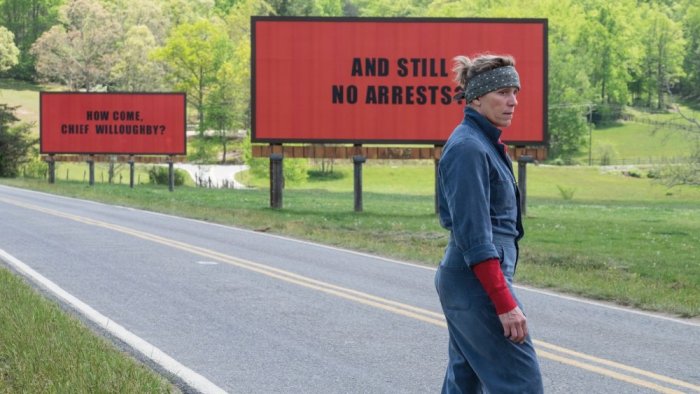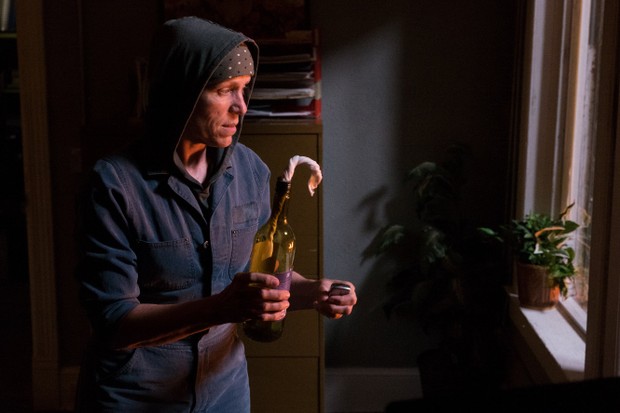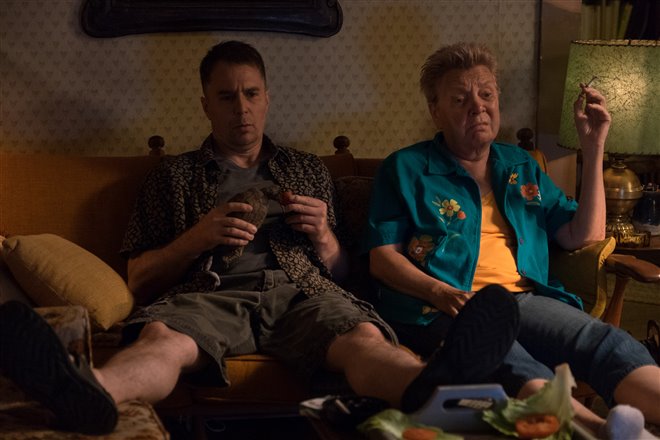Three Billboards Outside Ebbing, Missouri
Coming out of the screening, I was all turned upside down. My emotions have been stimulated and manipulated during that two-hour film and I needed to find how to think by myself again. Indeed, Martin McDonagh plays with dark humour, tragedy and uses some western tools to portray the Trumpian America of today.

Three Billboards defies the world of Hollywood with its four wins at the Golden Globes but also its nominations at the Oscars. The winner for most of these prizes is Sam Rockwell whose character portrays the homophobic and racist American prohibiting any social differences. In this sense, he created a polemic, some of the audience didn’t accept that the far-right was promoted in Hollywood. But with insight, Sam Rockwell deserves these prizes. His character is giving hope to America through the end (I’m not going to spoil) and calls for social changes not only in the national administration but also in the national way of thinking. Three Billboards is, therefore, a revolutionary film denouncing and pointing at the flaws of America guided by a particular corrupted elite.

In order to illustrate that message, McDonagh put at the forefront a strong character: Mildred played by Frances McDormand (Fargo). This woman loses any sense of femininity (McDormand said she was inspired by John Wayne) due to her obsession with finding the truth about her daughter’s death. She becomes our mediator between her feeling of toxic power of rage shared with us and her dark humour. We want to fight by her side and wear that bandana to look like her. The film does not seem to share a feminist tone but can be read as a depiction of the gender inequalities reigning in America in which the woman has to look and act like a man in order to be heard.

What McDonagh understood is that cinema reaches a particular audience through the sharing of violence. People like to see others suffering and in this film, our urge for voyeurism is highly depicted; we assist to a suicide, a guy being thrown out of a window, a scene of domestic violence … But we do not look away, we are witnesses of these violences and McDonagh makes it seems morally right to observe them. In this way, he is defying one of the most questioned issues of the cinematic history: how to represent the suffering of others with a reasonable ethical point of view? Here, McDonagh used dark humour which leads us to the end of a tragic and violent story without us feeling traumatised. The subjects of rape, violence, corruption, suicide, racism … every negative act is portrayed but it is treated in such a light and inspirational way that we strangely laugh at them and thus makes us realise them rather than feel full of hate, and it feels good.

It is a film about characters; it gives a voice to minorities with ‘small’ existence who should be given credit to the world. We are immersed in this small town in the middle of the Missouri state. The landscape shots are breath-taking, the redness of the billboards is aesthetically provocative but appealing, the music inspired by the western makes you in the mood to fight the social oppression…. in a nutshell, the cinematic tools are on point and brings you to Mildred’s fight for justice with a strong drive, you want the truth.

However, it is not a film about revenge but more about waking up the society on the flaws of its organisation and social hierarchy just as Mildred’s is woken up during her sleep. Moreover, each character seems not to be exempt from any personal catastrophes. This situation in which no one is perfectly represented makes us question ourselves. It is known that in the making and watching of a film or any audio-visual narrative, we are asked to position ourselves in relation to the acts and needs, the trials and tribulations, and even the joy and suffering of others. In this film, it is explicitly exposed; we are connected with the characters and feel in relation to them. Three Billboards constantly obligate its audience to question its own reactions to it – both in terms of what you’re laughing at and why, and also in the way its characters constantly challenge our burnt-down assumption of what they’d do, and what might be done to them in turn. All of this is drawn from the constant use of the tone’s breach which does not give us time to realise that we laughed at a racist joke. We are cleverly manipulated during two hours and we become aware of our reactions only a few minutes after the end of the film. And believe me, you do not know what to think of humanity’s thoughts when you come back to it. It is darkly hilarious while being heart-breaking.
